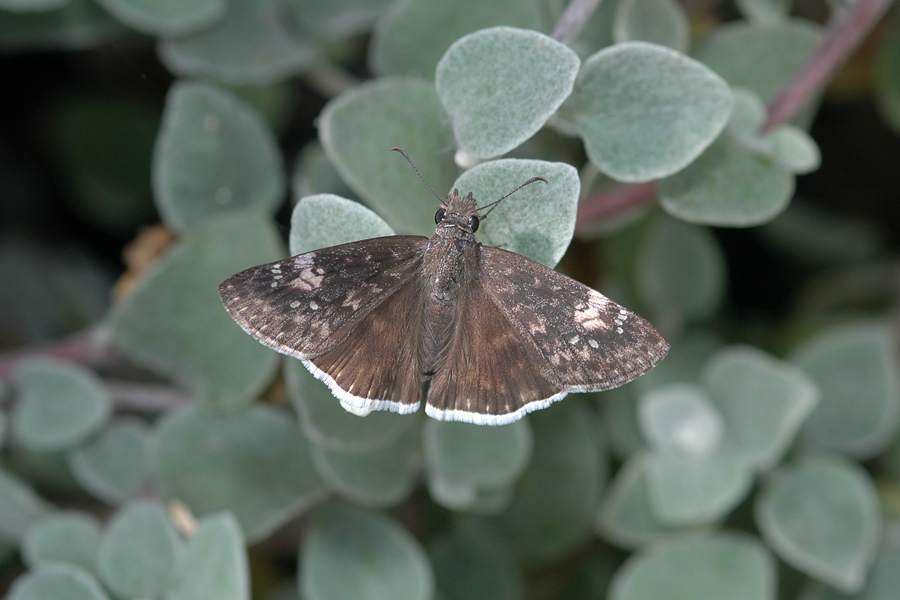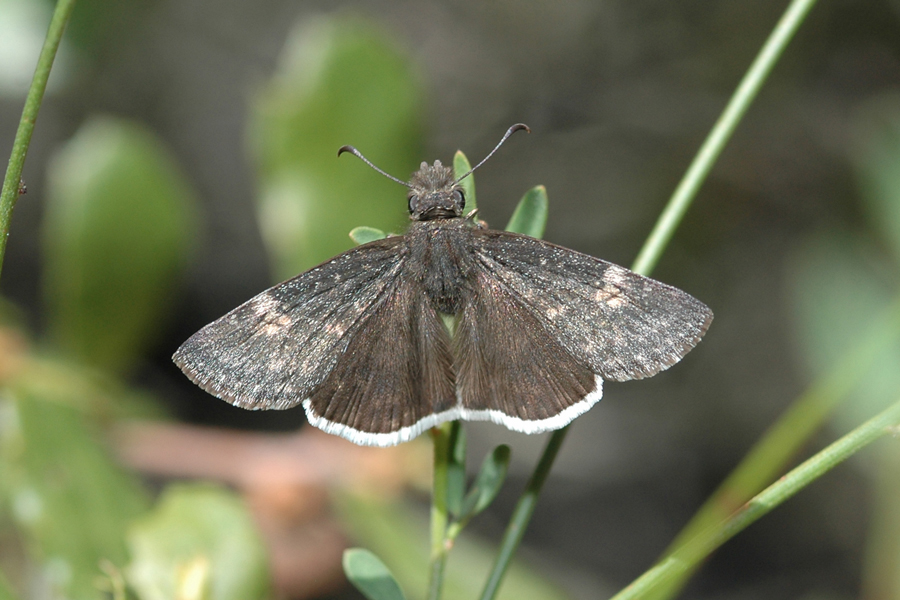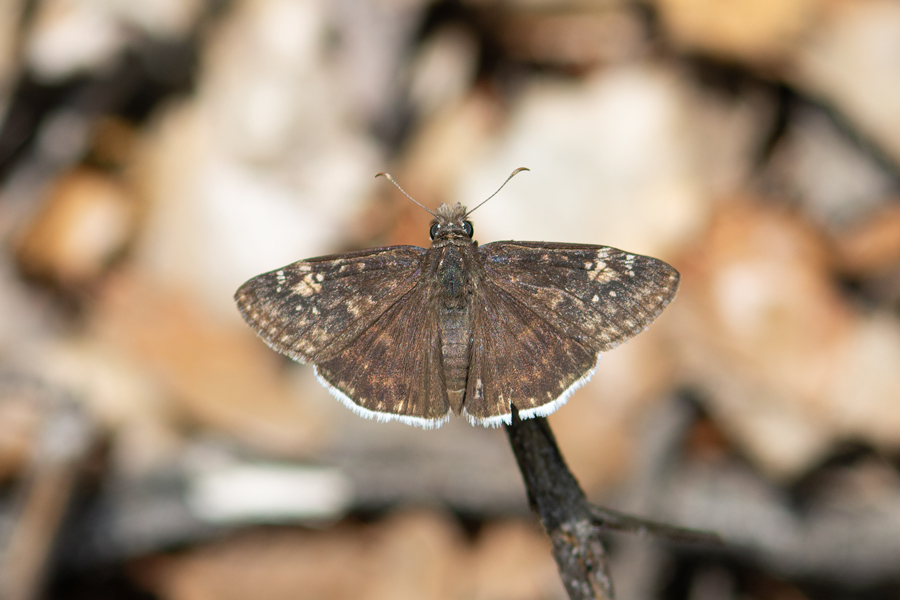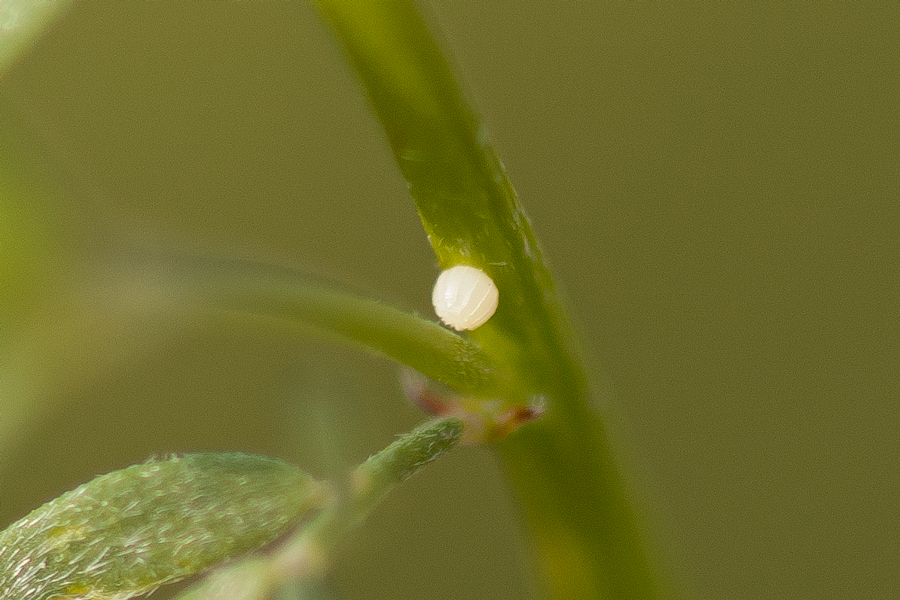Gesta (Erynnis) funeralis
Funereal Duskywing
This is southern California's most common duskywing, found in suburban gardens as well as coastal, montane, and even some desert habitats. Its larval food plants are many common legumes (Fabaceae family) including deerweed (Acmispon glaber) and desert lotus (Acmispon rigidus). Duskywings can be difficult to identify with certainty, but in our area only two species have a white fringe on the hind wings: the funereal and mournful (tristis) duskywings. Mournful duskywings feed on oaks, and males hilltop to find mates. So if you're around oaks and/or on a hilltop, you may have the mournful. If you're in a patch of deerweed or other Fabaceae-family plants, there's a good chance you're among funereal duskywings. Whether the light patch on the forewings always indicates funereal duskywings is worth deeper study; I know of two eminent lepidopterists who do not believe the two species can be reliably distinguished by field marks. Some (not all) of the photos below are judgement calls.
The overwintering stage is as a mature caterpillar in a silken leaf shelter. Like the mournful duskywing, it flies much of the year.





